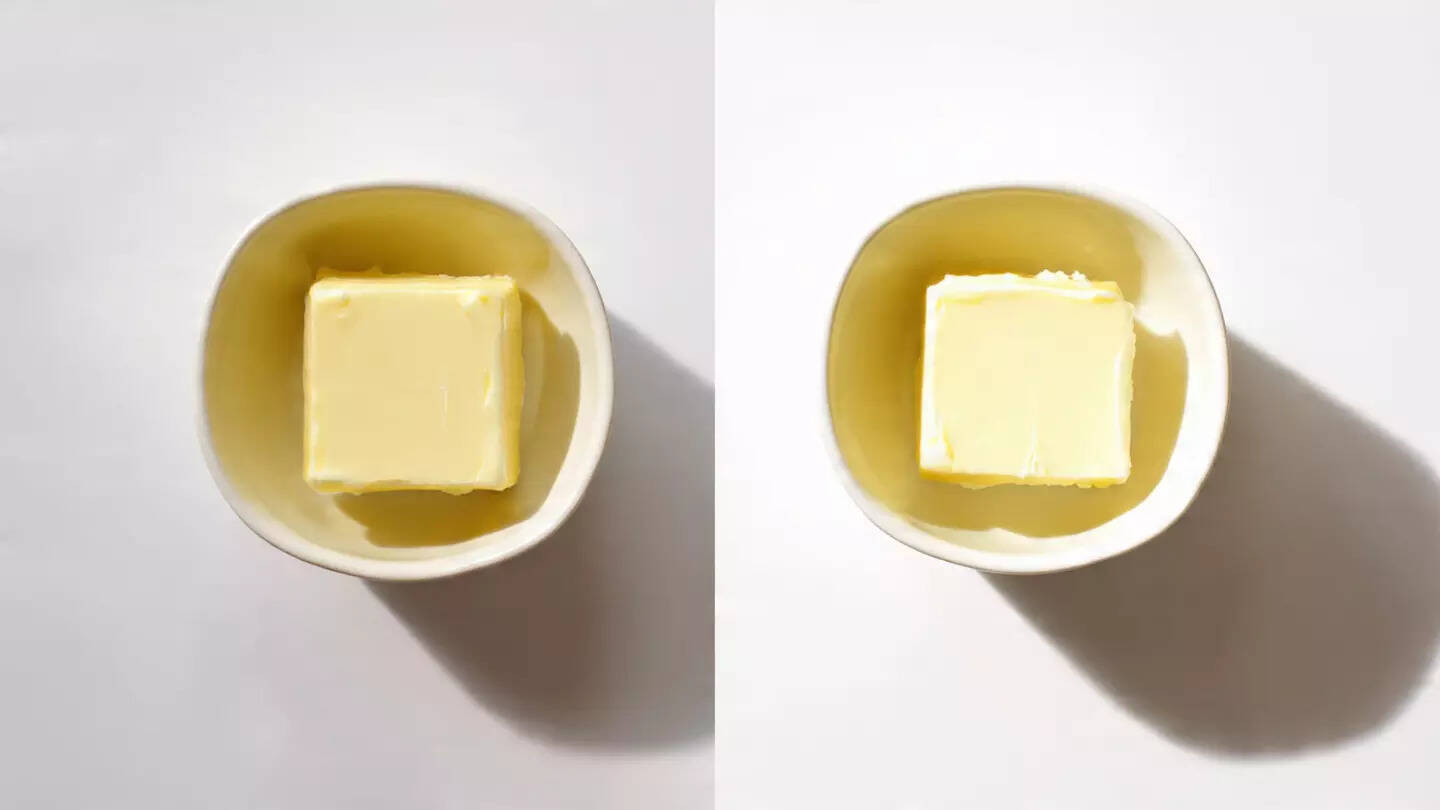How To Detect Fake Butter & Choose The Real One
Butter is a staple in many kitchens, prized for its creamy texture, rich flavour and versatility. However, not all butter sold in markets is genuine. Some products are adulterated with vegetable oils, artificial colouring or emulsifiers to cut costs and mimic real butter’s appearance. Consuming such fake or low-quality butter can impact both flavour and health, as it often contains trans fats and additives. Learning how to identify authentic butter helps you make informed choices and maintain both taste and nutrition in your diet.
Identifying fake butter doesn’t require expert equipment — simple observation, texture checks and ingredient awareness are often enough. Real butter melts evenly, tastes pure and contains only milk or cream, while imitations rely on additives and vegetable oils. By staying informed and choosing verified brands, you can enjoy the true flavour and nutritional benefits of authentic butter without compromising your health.
Image Courtesy: Meta AI

Understanding What Real Butter Is
True butter is made by churning cream or milk to separate the fat from buttermilk. It typically contains around 80–82 percent milk fat, 16–18 percent water and small amounts of milk solids. Genuine butter should have a smooth, uniform texture, a mild milky aroma and a rich golden-yellow colour that varies slightly with the animal’s diet. Anything that feels waxy, overly white, or lacks that natural dairy aroma may indicate adulteration.Check the Ingredients Label
The simplest way to identify real butter is by reading the label carefully. Authentic butter lists only two primary ingredients — milk or cream, and sometimes salt. If the packaging mentions “vegetable oil”, “margarine”, “vanaspati”, “emulsifiers” or “hydrogenated fats”, the product is not pure butter. Regulatory standards in India, the UK and the EU require that products labelled “butter” contain only dairy fat, while blended spreads must be clearly identified as such.Observe Texture and Appearance
Pure butter softens evenly at room temperature and spreads smoothly without separating. Fake butter or adulterated blends often become greasy or grainy when warmed. Real butter also develops a consistent sheen when cut, while synthetic varieties may look glossy but feel sticky to the touch. Colour uniformity matters too — authentic butter tends to have a natural, soft yellow hue, whereas imitations may appear unnaturally pale or artificially bright.The Melting Test
A quick kitchen test can help distinguish real butter from substitutes. Place a teaspoon of butter in a hot pan or bowl. True butter melts uniformly and begins to release a pleasant, nutty aroma as the milk solids brown slightly. Fake butter or margarine often bubbles excessively, leaves behind a foamy residue, or gives off an oily smell due to added vegetable fats and emulsifiers.You may also like
- Former NYC mayor Bill de Blasio votes for Mamdani wearing viral 'Hot Girls for Zohran' T-shirt — see photo
- Ariana Grande forced to cancel 'Wicked For Good' world premiere in Brazil
- "80% of Naxalites in Abujhmarh have surrendered": SP Robinsons Guria
- EU ministers meet to align climate goals ahead of UN climate talks
- Haryana CM announces relief measures for farmers
The Refrigerator Test
Butter’s behaviour in cold storage can also reveal its authenticity. Genuine butter hardens firmly in the refrigerator and regains its softness gradually at room temperature. Fake butter or margarine may stay semi-soft even when chilled, because of the higher content of vegetable oils. This test is especially useful for identifying low-quality butter blends that mimic dairy fat but lack the same composition.Water Dissolution Check
Another simple method involves adding a small piece of butter to a glass of warm water. Real butter typically floats and retains its shape before slowly melting. Fake or adulterated butter tends to disperse quickly or leave an oily layer on the surface because of its synthetic fat content. While not definitive, this quick check provides a visual indication of product quality.Taste and Aroma Indicators
Real butter has a distinctive creamy flavour with a mild sweetness and a clean finish. It should melt smoothly on the tongue without leaving a greasy coating. Fake butter often tastes bland, excessively salty or artificial, with a lingering oily aftertaste. The aroma can also be a giveaway — authentic butter smells naturally milky and slightly nutty, whereas imitations may have a strong, chemical scent.Health Implications of Fake Butter
Fake or adulterated butter often contains hydrogenated oils or trans fats that can raise LDL (bad) cholesterol and increase cardiovascular risk. In contrast, moderate consumption of pure butter provides fat-soluble vitamins such as A, D, E and K. While all fats should be consumed in moderation, genuine butter is generally safer than synthetic spreads when eaten as part of a balanced diet.How to Choose Quality Butter
Opt for trusted brands that adhere to food safety standards and avoid buying unlabelled or loose butter from unreliable sources. Look for FSSAI (in India), FDA (in the US), or EU quality certification logos. Storing butter properly — refrigerated and wrapped to prevent oxidation — also helps preserve its quality and flavour.Identifying fake butter doesn’t require expert equipment — simple observation, texture checks and ingredient awareness are often enough. Real butter melts evenly, tastes pure and contains only milk or cream, while imitations rely on additives and vegetable oils. By staying informed and choosing verified brands, you can enjoy the true flavour and nutritional benefits of authentic butter without compromising your health.
Image Courtesy: Meta AI









